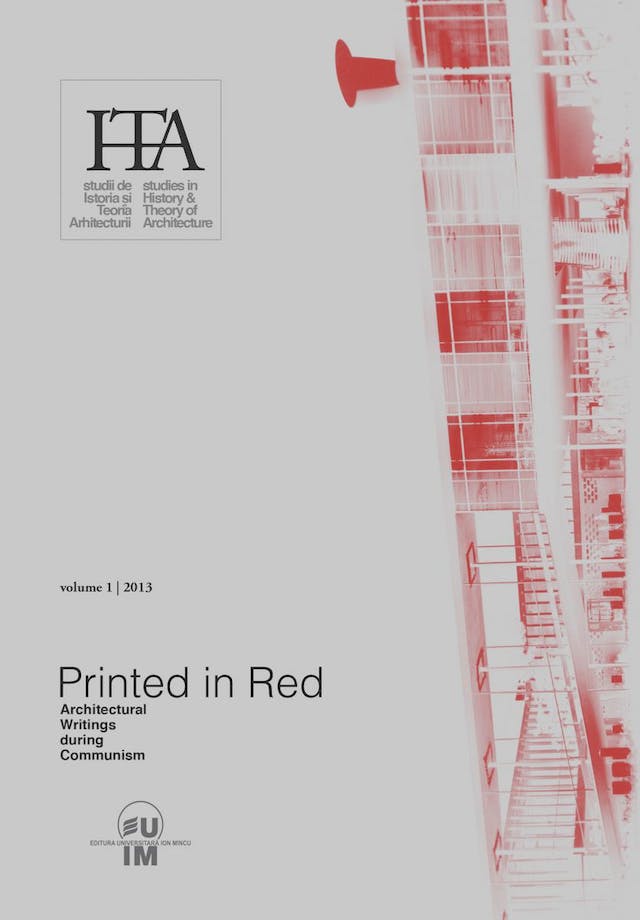From Casa Scânteii to Casa Poporului and Back Architecture as Icon of a Totalitarian Regime
From Casa Scânteii to Casa Poporului and Back
Architecture as Icon of a Totalitarian Regime
by
Irina Tulbure
Keywords
Communist propaganda
Socialist Realism
politics and architecture
mass press
Scânteia
Totalitarian regimes have often made use of architecture as a means of propaganda. Conceived largely through the reiteration of classical principles, the buildings that bear testimony to this era can be easily placed in a distinct architectural niche. In most cases, totalitarian architecture does not represent or speak of itself, but is rather a bearer of messages, an intermediary of the political regime.
Casa Scânteii and Casa Republicii are the two buildings that mark the official beginning and the final moment of the communist regime in Romania. Despite the apparent similarity of their architectural style and despite the fact that they are both symbols of the communist power, the two palaces embody distinct political stages, entirely independent of the inner evolutional process of architecture. The message sent, at an interval of forty years, can be deciphered not through an architectural code but by means of a complex system of Soviet-rooted propaganda.
Rewriting of the past and of recorded history, along with the invention of a politicized version of it, is one of the methods used by communist regimes. This process had as its final goal the creation of a mythology of communism, consolidated through celebrations and ceremonies, pinned down in a red calendar of history. Each present action was justified through the past, as if the past was indisputable evidence, but in reality the past was continuously changing: party history in the fifties was by far different from the version it would flaunt in the eighties. Each celebration of a key moment marked in the red calendar was an opportunity for the public display of regime achievements, with architecture as incontrovertible material proof. The new man, the one responsible for these achievements, was one of the most disputed roles on the stage of communist construction.
Although designing Casa Scânteii was decided upon in 1948, the building truly became the star of the year 1952, as the first genuinely Socialist Realist building in Romania, as one of the first exemplary socialist projects. The design and the official approval of the project was an ostentatious process, heavily publicized and gradually unfolded in the mass press. Casa Scânteii, the headquarters of the main party newspaper and the main publishing house, embodied one of the promises which the party had made to the masses. Equivalent with indoctrination, the enlightenment of the masses was certainly a project that concerned everybody and with which everyone was expected to identify. The construction of Casa Scânteii was an achievement of the architects and engineers, of the workers and technicians, but also of the students, children, Stakhanovite miners, railway workers, in fact all the different faces of the new man who obviously understood that he would have been unable to complete the great construction without the direct and thorough guidance of the Soviet Union.
Forty years later, the building site of Casa Republicii embodied political independence, a communist project, designed as the representational façade of a national party. At the same time, Casa Republicii was nothing more than the background of a scene where the main actor was the president of the country, playing a role that encompassed all aspects of the new man. Less present in the mass media and almost ignored by the only architectural magazine, the construction of Casa Republicii was meant to mark not so much the achievements of communism, but of what was claimed to be the most important moment in communist history. Although ostensibly emerging from a similar context to Casa Scânteii, Casa Republicii was merely another reflection of the leader’s personality cult. The only one to whom credit was due for the conception, the design and the inauguration of the building site itself was the president of the country.
After the earthquake of 1977, the exemplary project for the systematization of Bucharest city center (including Casa Republicii) was meant to become the only model worth emulating for the redevelopment of all Romanian localities. This approach was in reality a reevaluation of the decisions of 1952 regarding the socialist reconstruction of Bucharest and of the towns of Romania. Yet the official representations in the press of the eighties avoided any reference to the projects of the fifties and omitted the link with their own history.
Published in

Chicago citation style
DOI:
10.54508/sITA.1.08